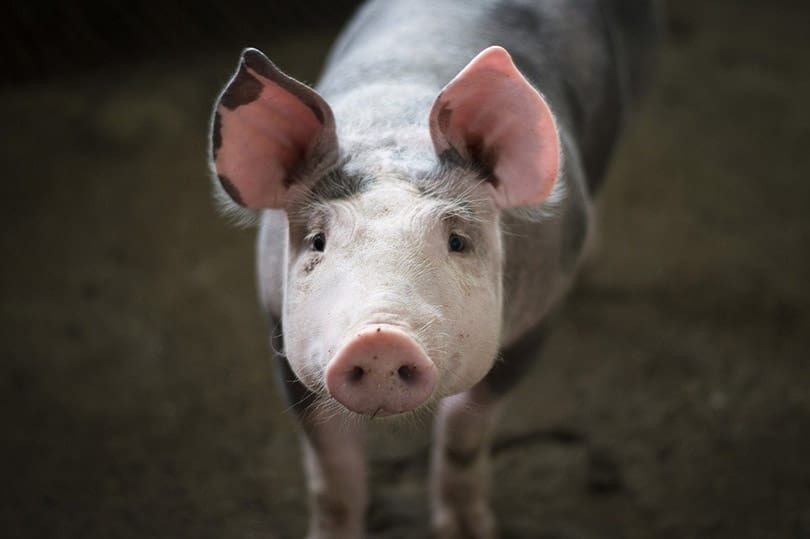Pigs often have a bad reputation. Many people believe that these animals are sloppy, dirty, and lazy. However, all these descriptions can’t be further from the truth. Pigs are actually very smart and sweet, and they love to play.
It’s time for pigs to receive the recognition that they deserve. Therefore, we’re debunking five common myths and misconceptions to prove that they’re actually brilliant animals that people have misjudged for far too long.

The 5 Biggest Pig Myths and Misconceptions
1. Pigs Are Supposed To Be Fat
Contrary to popular belief, pigs aren’t supposed to be fat. Just like humans, pigs require adequate exercise and a healthy diet. Unfortunately, unhealthy body weight is a common problem for pigs.
Obesity in pigs can cause physical and mental challenges that can significantly negatively impact their quality of life. For example, some obese pigs can experience symptoms of depression. They may prefer to be left alone and disengage from interactions with other pigs and people.
Severe cases of obesity in pigs can lead to mechanical blindness. Mechanical blindness occurs when a pig gains so much weight that the fat on its face covers up its eyes and obstructs its vision. Pigs can also experience hearing loss if their fat covers up their ears.
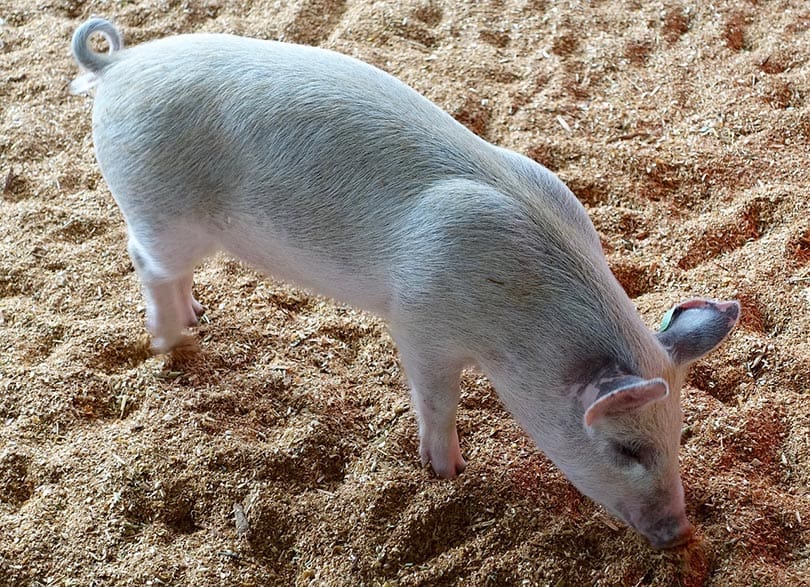
How To Tell If Your Pig Is Healthy
Since there are many varieties of pigs, it’s difficult to tell if a pig is overweight or obese simply by weighing it. One of the best ways to determine if a pig is overweight is to look at its appearance and do a body scoring.
A pig at an ideal body weight will generally have readily visible eyes, and its belly doesn’t hang past its knees. Also, make sure to feel for its bones. If you apply firm pressure on your pig, you should barely be able to detect its bones.
An underweight pig will have visible bones, and you can easily feel them when you apply pressure. They also can’t stand properly on their own, and they’ll also have a hunched spine.
An overweight pig will have a very low-hanging belly. Its bones are also undetectable when you apply firm pressure. It will have a fat hump on its shoulders, and fat will also push forward its ears.
How To Exercise Your Pigs
Pigs require daily routine exercise. Mini pig owners will walk their pigs for 15 to 30 minutes a day. You can also provide enrichment activities that exercise both the pig’s brain and body. One enrichment activity that pig owners can do is put the pig’s food in a sturdy container with holes punched through it. The pig will have to roll the container around to dispense food.

2. Pigs Can Eat Anything
Pigs will technically eat anything, but they shouldn’t eat everything. Pigs are omnivores, and they’re also not known to be picky eaters. Therefore, many pig owners will make the mistake of feeding their pigs anything, including table scraps.
However, there are some things that pigs should avoid eating. They also have a specific diet that will significantly benefit their overall health and well-being.
Proper Diet for Pigs
In general, pigs will benefit from a diet of pig pellets supplemented with vegetables. In the wild, pigs can graze and eat small meals about seven to eight times a day. However, this type of feeding schedule is often not ideal for pig owners.
Therefore, pet pigs can often have two to three meals spread out throughout the day. To start, the daily amount of food is 2% of the pig’s ideal body weight. Then, pig owners will make slight adjustments to the feeding amount depending on the pig’s individual growth and development.
If a pig isn’t finishing all of its food, then it means that they’re overfed.
Pig owners should avoid giving their pig raw meat because it can cause an outbreak of African Swine Fever. Pigs also require a low sodium diet, so they shouldn’t eat any dog or cat food because these types of food tend to have a high sodium content.
Pigs also shouldn’t eat leftovers or spoiled food. Although they will eat these things, they’re very harmful to pigs. Leftovers and rotting food can contain mold, which can cause food poisoning.

3. Pigs Are Dirty
Pigs are often mistaken as dirty animals because it’s common to see them rolling around in the mud. However, one of the reasons why pigs may wallow in mud is to cool off.
Pigs do have some sweat glands, but it’s not enough to help them stay cool. Therefore, they remain in mud to cool down and keep their body temperature at a healthy level. Pigs may also wallow in mud as a means of scraping off parasites.
In fact, the phrase “sweating like a pig” comes from a type of iron smelting process. To produce steel, iron ore gets smelted into “pig iron,” which holds a vague shape of a litter of piglets.
Iron ore gets melted in high temperatures and then gets poured into pig iron molds. When the metal cools, condensation forms around it, giving a similar appearance to sweat. So, the phrase has nothing to do with actual pigs.
Pigs are actually very clean animals. When they live in adequate spaces with distinct resting and eating areas, they absolutely will not relieve themselves anywhere near those spots. Many pot-bellied pigs can also learn how to be potty trained.
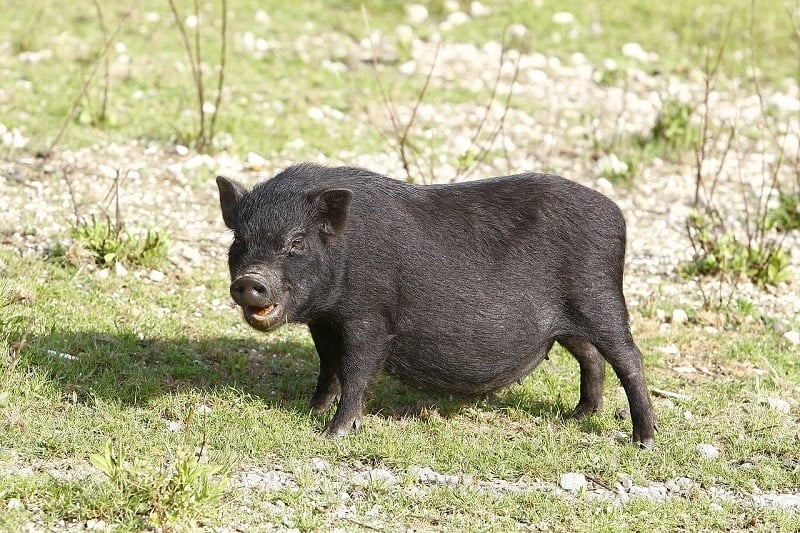
4. Pigs Are Lazy
This myth can’t be further from the truth. Pigs are actually very active animals. In the wild, feral hogs can cover a lot of ground as they forage and graze.
Pigs are also relatively fast. An average adult pig can run up to speeds of 11 mph. They also like to swim.
Domesticated pigs can often appear lazy because they either don’t have enough space in their pen to exercise or eat an improper diet that causes them to become overweight or obese. In reality, a healthy pig will enjoy exercise and staying engaged and active.
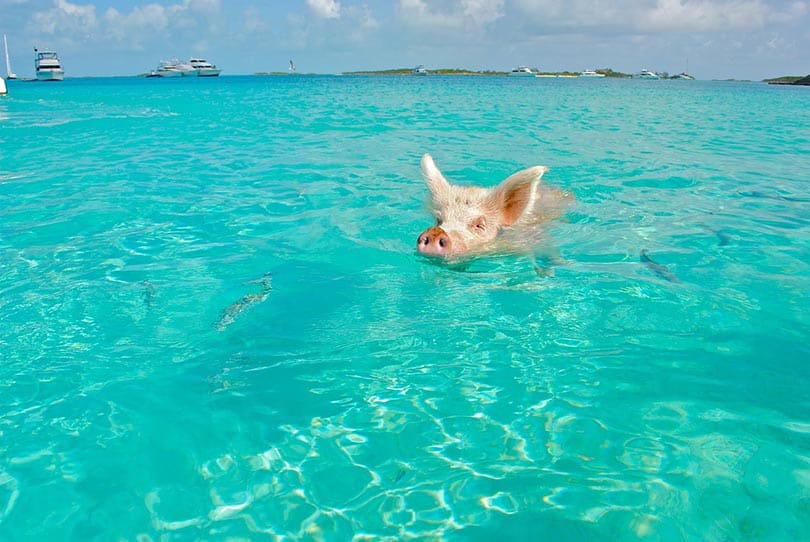
5. Pigs Aren’t Intelligent
Pigs are actually quite clever. Scientific research shows that pigs have a high level of cognitive and emotional intelligence. They have very good long-term memory, and they’re able to remember things from the past and use those memories to anticipate future events.
Pigs can also play creatively, and they also have very complex social structures. They also experience emotions and can show empathy and understand others’ perspectives. As a matter of fact, they can be so socially aware that they can act in ways to manipulate and deceive other pigs.
Overall, pigs have excellent memory, problem-solving skills, and social understanding.
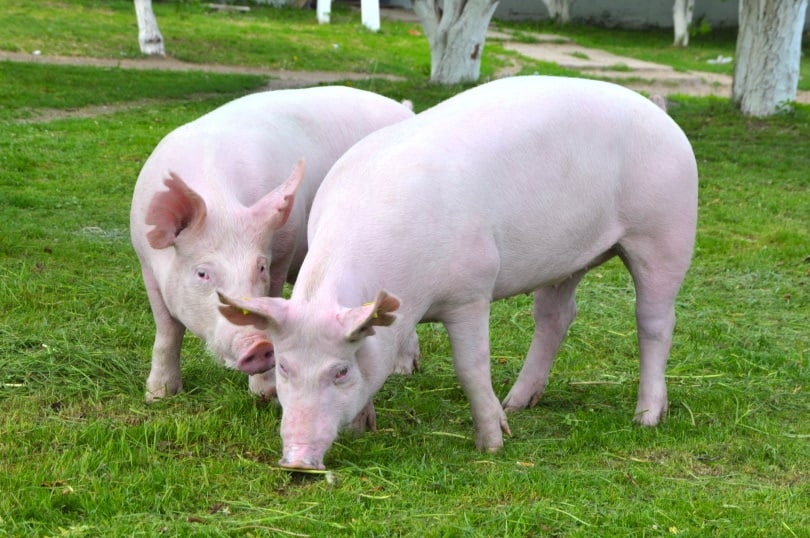

Wrap Up
Pigs are one of the most misunderstood domesticated animals. They’re actually very mentally and emotionally intelligent, and a lot of smaller pig breeds can become very loving pets.
So, the next time someone calls you a pig, there’s no need to take offense. You’re just getting compared to a highly intelligent, gentle, and kind mammal.
- You may also like to read: Can Pigs Swim? Do They Like It?
Featured Image Credit: yairventuraf, Pixabay
